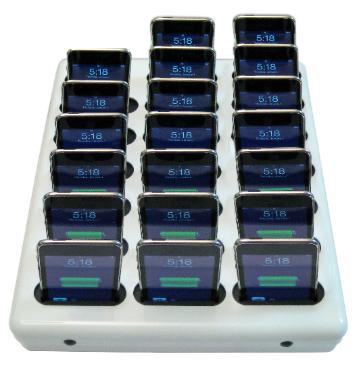The Verizon iPhone started to make its way into customers’ hands this week, elected officials are using and abusing iPads, and the Vatican speaks up on an iPhone app, all in this week’s edition of In the News:
- Lexis Advance is the next generation of LexisNexis, that company’s answer to Westlaw Next. Lexis Advance is currently only available to solo practitioners, but Lexis is adding new features and working out the kinks and at some point Lexis Advance will be available to all Lexis users. Attorney Robert Ambrogi reports that Lexis Advance now has an iPhone app. You can get more information here. Hopefully it is better than the current Lexis app, which I consider a disappointment.
- Josh Barrett of Tablet Legal reviews TrialPad, an iPad app that can be used for courtroom presentations.
- Michael Grothaus of TUAW reports that the British House of Lords will soon allow the use of iPads during debates.
- As noted in that article and reported by the International Business Times, members of parliament in Italy are allowed to use iPads, and one of them was recently photographed using it to access an escort website. I’m just glad that we don’t have any elected officials in the U.S. doing similarly dumb things on the Internet and getting caught.
- If you need to go to confession after some of the dumb things that you did on (or off) the Internet, there was lots of news this week about Confession, a $1.99 app for Catholics that aids you in the confessional, helping you with what to say and providing the words for prayers. Tim Stevens of Engadget reported on the app, saying that it was approved by the Church because it was developed with the Catholic Church. Then some news outlets started to report that the Vatican condemned the app, but I don’t think that is actually true. Dan Gilgoff of CNN reports that the Vatican simply does not condone making a confession via an iPhone or any other electronic device, but that is not what this app does; instead, it just helps you to prepare for confession with a real priest, which is appropriate. Click here for Confession ($1.99):

- Attorney and King & Spalding librarian Greg Lambert of the 3 Geeks and a Law Blog reviews Whistle Phone, an app that allows you to turn an iPad or an iPod touch into a phone. Click here for Whistle Phone (free):

- Attorney David Sparks of MacSparky explains that using the iPad has caused him to realize that he prefers to write in a plain text format in an article he titles: The Joy of Text.
- Peter Ha of the new iPad-only newspaper The Daily reports on an interview with Ge Wang, an app developer with Smule, about the great potential for creating content with the iPad.
- Speaking of The Daily, if you have an iPad, I hope that you are taking advantage of this two week period of time when you can subscribe to The Daily for free. Art of the iPhone posted a comprehensive review of the app. I am still trying to decide whether I will pay the dollar a week to subscribe when the free trial ends. On the one hand, the content is usually rather shallow, although every once in a while you see an article with some depth. Also, this is not an up-to-the-minute news sources, like the New York Times website or CNN. On the other hand, if you just think of it as a daily magazine with a broad view of the news of the day, and accept that it is just as likely to have a fluff story that you might find in People or Us Weekly, then it isn’t too bad. I like that you can just swipe right to left to quickly browse thorugh every story in every issue, making it easy to skip over the stories that are of no interest. One curious omission: Why doesn’t a publication that is so tightly integrated with the newest technology have a dedicated technology news section? I’ll mostly likely subscribe to The Daily for at least a while, just to see if it is something that I continue to read and to see what improvements are made to the app, but I’ll continue to turn to sources like The New York Times for the rest of the story.
- Thomas Ricker of Engadget reports that German researchers have discovered a way to decrypt passwords from n iPhone’s keychain such as your GMail password or your corporate VPN password. So if you plan on losing your iPhone someplace, make sure that you are far away from the Fraunhofer Institute Secure Information Technology (Fraunhofer SIT).
- Anyone who wants a Verizon iPhone can now buy one, although if you are a current Verizon subscriber not yet eligible for an upgrade, you cannot take advantage of the subsidized $200/$300 price. Matt Peckham of PC World explains that for some, it is actually cheaper to end your Verizon contract and pay cancellation charges to get the best price on a Verizon iPhone.
- The Ronald Reagan library added 250 iPod touches as tour guides, according to Kelly Hodgkins of TUAW.
- If you enjoy being a lawyer so much that you also want to play one on your iPhone, JC Fletcher of Joystiq reports that the game Phoenix Wright is on sale right now for $0.99, along with many other iPhone games from Capcom, Sega and Namco.
- And finally, if you have an iPhone, chances are before long your spouse and kids will want one too. How do you manage charging all of those iPhones? Parat Solutions has the product for you — the PARASYNC which can charge 20 iPhones at once from a single iTunes library for the low price of $980. (via iPhone Download Blog)
































































